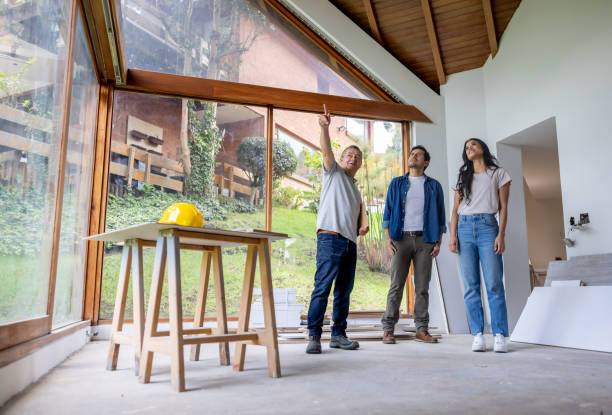Real estate maintenance forms the foundation of property value and longevity. Buildings, whether residential or commercial, require consistent attention to preserve their functionality, safety, and appeal. Neglecting repairs can lead to escalating costs, structural issues, and potential legal or safety hazards. Timely maintenance ensures that small problems are addressed before they grow into major complications. Every component of a property, from its roof to its foundation, plays a part in the overall performance of the structure. Owners who prioritize timely repairs often experience fewer emergencies, higher tenant satisfaction, and better returns on investment.
The discussion that follows explores key areas where timely maintenance has a lasting impact, revealing how simple interventions can protect property assets for years to come.
The Importance of Roof Maintenance
Roofs are among the most exposed parts of any property, constantly enduring wind, rain, sunlight, and temperature fluctuations. Small cracks or leaks can progress rapidly, compromising insulation and leading to water damage within walls or ceilings. When discussing repairing flat roofs with roofing professionals, the focus often centers on preventing water pooling and ensuring that drainage systems remain functional. A flat roof, by design, demands a more vigilant maintenance approach than pitched alternatives since water does not naturally run off.
Addressing issues as soon as they appear extends the life of the roofing materials and safeguards the structure beneath. Neglect can result in mold, rot, or compromised electrical systems, turning a minor repair into a costly reconstruction project. Maintaining the roof’s integrity is not only a matter of protecting against the elements but also preserving the value and safety of the entire property.
Plumbing and Water Systems
Water systems are vital for daily operations in any property, but their hidden nature often leads to unnoticed deterioration. Pipes corrode, seals degrade, and pressure changes can create leaks that remain invisible until the damage is significant. Regular inspections can reveal early warning signs, such as minor drops in water pressure or slight discoloration in walls. Timely repair of these issues prevents larger complications such as flooding, structural weakening, or contamination.
Plumbing maintenance is not limited to pipes alone; it extends to fixtures, drainage systems, and water heaters. Every component contributes to the smooth flow of water throughout the property. Addressing leaks and performing preventive repairs saves owners from expensive emergency interventions and potential damage to interiors.
A proactive approach helps maintain both functionality and hygiene, preventing mold growth and dampness that could affect residents’ health.
Electrical Systems and Safety
Electrical maintenance plays a critical role in keeping a property safe and efficient. Faulty wiring, overloaded circuits, or damaged outlets can create serious hazards, including fire risks. Small issues such as flickering lights or intermittent power failures often indicate deeper electrical problems.
Scheduling regular inspections with qualified technicians can detect wiring faults before they escalate. Repairs to electrical components must always meet safety standards and building regulations to prevent future complications. Timely attention to these systems can also reduce energy consumption, as outdated or damaged circuits often waste power.
Maintaining proper electrical function benefits not only the safety of occupants but also the long-term efficiency of the building. For property owners, reliable electricity supports smooth daily operations and enhances the overall appeal of the real estate asset.
Structural Integrity and Foundation Repairs
The foundation serves as the anchor of any property. When cracks or shifts occur, they can affect the entire structure above. Early signs such as uneven floors, sticking doors, or visible fractures in walls should never be ignored. Timely repair of foundational issues prevents extensive and costly reconstruction later. Water infiltration near the base of the building often accelerates structural deterioration, making it necessary to monitor drainage systems and soil movement. Reinforcing foundations at the first sign of distress helps maintain the building’s stability and extends its lifespan.
Proper attention to these aspects not only safeguards the property but also ensures that occupants remain safe and comfortable. Long-term neglect, by contrast, can render a property unsafe or unsellable, dramatically reducing its market value.
Aesthetic and Surface Repairs
Beyond functionality, the visual condition of a property significantly influences perception and value. Cracked walls, peeling paint, or worn flooring can create an impression of neglect even when the building is structurally sound. Regular touch-ups, painting, and surface repairs help preserve the property’s appeal and prevent deeper issues. For example, damaged paint can expose surfaces to moisture, leading to deterioration over time. Replacing damaged tiles, fixing minor cracks, and maintaining clean exteriors all contribute to a property’s presentation and longevity.
Tenants and buyers are more likely to invest in properties that appear well-cared-for. Attention to aesthetic repairs not only maintains visual appeal but also signals that deeper maintenance standards are upheld, strengthening trust in the property’s management.
Timely repairs stand at the core of effective real estate maintenance. The practice of addressing maintenance promptly not only preserves physical assets but also builds long-term trust and financial resilience within the real estate industry.
Published by HOLR Magazine.




